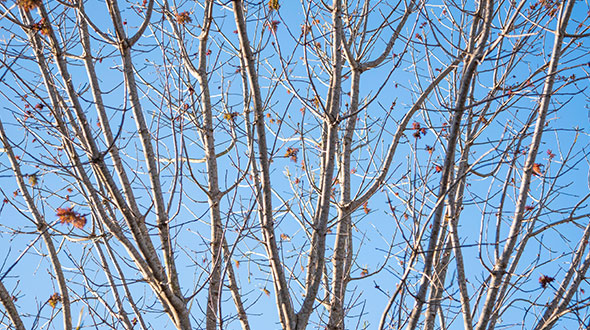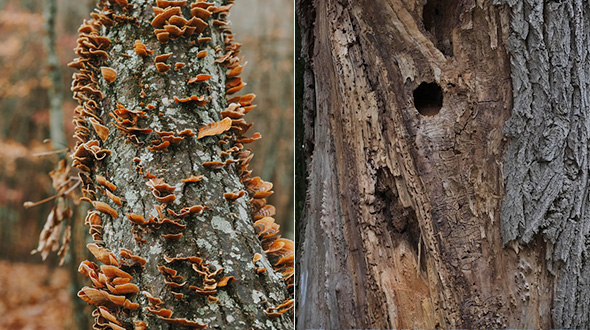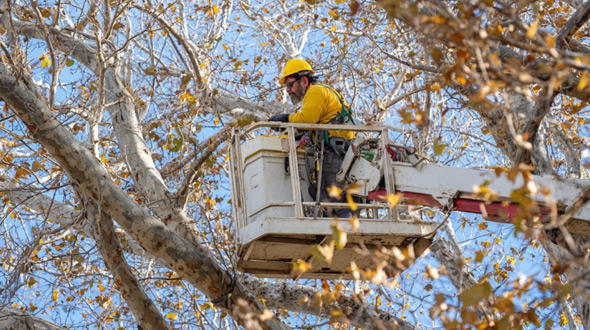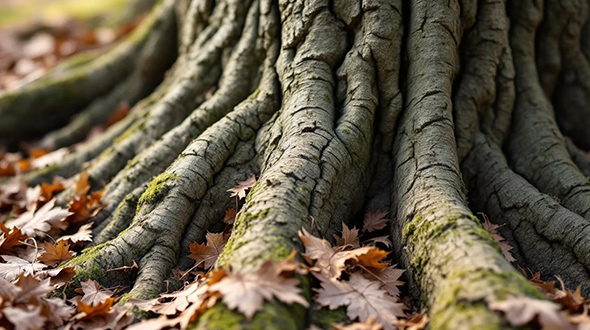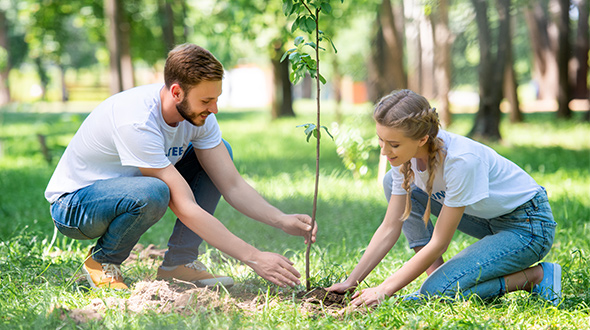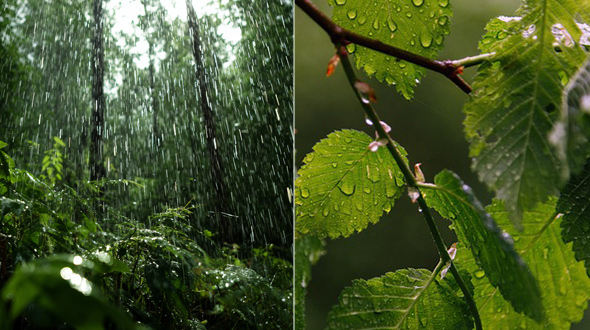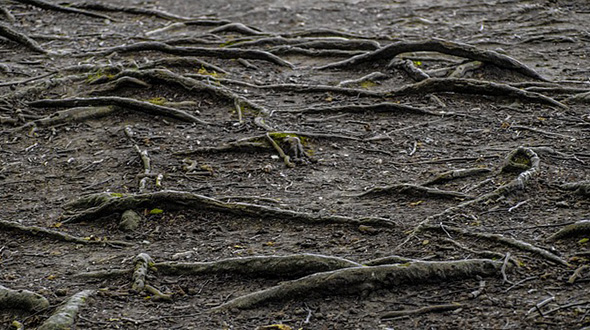Trees are natural air purifiers that absorb pollutants and release clean oxygen. They filter out harmful gases and particles, improving air quality. In this article, we will explore how trees clean the air and their importance to the environment.

Key Takeaways
- Trees serve as natural air purifiers by absorbing harmful pollutants, capturing particulate matter, and releasing clean oxygen, significantly improving air quality and human health.
- Urban trees play a crucial role in mitigating ground-level ozone, blocking toxic pollutants, and cooling environments, thus enhancing the livability of city areas.
- Protecting mature trees and planting native species is essential for biodiversity, carbon storage, and overall environmental health, necessitating community involvement for sustainable conservation efforts.
The Role of Trees in Air Pollution Removal
Trees are nature’s air purifiers, playing an integral role in reducing air pollution and improving air quality. They function as natural filters by absorbing harmful pollutants and releasing clean oxygen, benefiting both human health and the environment. Urban trees, in particular, are vital for filtering out airborne pollutants such as particulate matter and nitrogen oxides, significantly enhancing the air quality we breathe.
Across the United States, trees filter million tons of air pollutants annually, positively impacting respiratory health and contributing to ecological balance. Trees achieve this through three key mechanisms: absorbing gaseous pollutants, capturing particulate matter, and releasing clean oxygen.
Absorbing Gaseous Pollutants
Trees absorb gaseous pollutants through tiny openings on their leaves called stomata. This process involves the intake of harmful gases such as:
- Sulfur dioxide (SO₂)
- Nitrogen dioxide (NO₂)
- Carbon monoxide (CO)
- Ozone (O₃)
These gases are then converted inside the leaf. By absorbing these pollutants, trees help mitigate gaseous air pollution and reduce the adverse impacts of industrial processes and fossil fuel combustion.
Absorbing gaseous pollutants helps clean the air and reduce greenhouse gas emissions. Through the process called photosynthesis, trees convert carbon dioxide into oxygen, further enhancing air quality and promoting a healthier environment.
Capturing Particulate Matter
In addition to absorbing gaseous pollutants, trees are highly effective at capturing particulate matter from the air. Their leaves and branches act as natural filters, trapping tiny particles such as:
- dust
- soot
- other contaminants
By capturing these particles, trees prevent them from remaining suspended in the atmosphere. This capability is particularly beneficial near roadways and industrial sites, where dense tree coverage can significantly reduce the concentration of toxic pollutants.
The impact of trees in filtering particulate matter is most effective within a distance of 100 feet, making urban trees essential for improving air quality in densely populated areas. Removing harmful particles improves respiratory health and overall well-being.
Releasing Clean Oxygen
One of the most well-known benefits of trees is their ability to release clean oxygen through the process of photosynthesis. During this process, trees convert carbon dioxide into oxygen, which is then released into the atmosphere, significantly enhancing the quality of the air we breathe.

This continuous production of oxygen is vital for maintaining ecological balance and supporting life on Earth. The release of clean oxygen by trees not only contributes to improved air quality but also helps mitigate the harmful effects of air pollution on our respiratory systems and overall health.
How Trees Improve Urban Air Quality
Urban trees are indispensable for improving air quality in cities, where pollution is often a pressing issue. They reduce airborne pollutants, including particulate matter and nitrogen oxides, creating healthier environments for city dwellers. By filtering pollution and trapping harmful particles on their leaves and branches, urban trees play a critical role in mitigating particulate pollution.
Next, we’ll explore how trees help reduce ground-level ozone, block toxic pollutants, and cool urban areas.
Reducing Ground-Level Ozone
Ground-level ozone is a major contributor to urban smog, posing severe health risks. Trees help minimize ground-level ozone levels by providing shade, which cools the area and reduces the heat that contributes to ozone formation. This cooling effect is especially beneficial in cities, where high temperatures can exacerbate air pollution and increase the formation of smog.
Lowering ground-level ozone levels helps reduce acute respiratory symptoms, preventing over half a million cases annually. This reduction in respiratory issues highlights the crucial role trees play in maintaining healthy urban environments.
Blocking Toxic Pollutants
Trees serve as natural barriers against toxic pollutants, particularly in densely populated urban areas near busy roads and industrial sites. Through their leaves and branches, trees capture and filter out harmful pollutants from the air, acting as biological air filters that help to remove pollutants. Trees can absorb gaseous toxic pollutants such as nitrogen oxides, sulfur dioxides, and various chemical compounds, which are common in urban air.
Improved air quality from trees lowers respiratory issues, mitigating conditions like asthma and other lung diseases. The presence of trees supports community health by promoting cleaner air to improve air quality, leading to an overall increase in well-being and quality of life.
Cooling Urban Areas
Trees help cool urban environments by providing shade and releasing water vapor. This cooling effect can lower local temperatures by several degrees, reducing the need for air conditioning and mitigating energy consumption in nearby buildings. Trees can provide shade that not only enhances comfort but also contributes to improved air quality by reducing the heat that fosters air pollution. Additionally, trees remove pollutants from the air, further enhancing the benefits they provide.
Increased tree cover in urban areas correlates with fewer heat-related health incidents, which can lower heart disease rates. Thus, urban trees play a critical role in creating healthier and more comfortable living environments.
The Impact of Trees on Human Health

Trees provide numerous benefits to human health, both directly and indirectly:
- Reducing air pollution enhances physical health.
- Promoting outdoor activities supports weight management and overall well-being.
- The cooling effects of trees lower energy consumption, contributing to a healthier environment.
Moreover, trees play a significant role in improving air quality, which directly impacts human health. Filtering pollutants and releasing clean oxygen, trees create healthier living conditions and reduce the harmful effects of air pollution.
Let’s explore how trees help lower respiratory issues, enhance mental well-being, and reduce heart disease risk.
Lowering Respiratory Issues
Trees help mitigate respiratory issues by:
- Absorption of harmful pollutants that can exacerbate conditions like asthma
- Reduction of airborne pollutants such as nitrogen oxides and particulate matter significantly lowers the incidence of respiratory diseases.
- Filtration of harmful airborne particles, leading to improved lung function and better respiratory health
Trees act as natural barriers that protect communities from harmful pollutants near roads and industrial zones, reducing respiratory problems such as asthma and other lung diseases. Their collective impact in lowering airborne pollutants contributes significantly to healthier respiratory conditions in communities.
Enhancing Mental Well-being
Access to green spaces with trees significantly enhances mental health by alleviating stress and promoting physical activity. Exposure to tree-filled environments has been shown to decrease feelings of stress and improve overall mood. Interaction with greener spaces can lead to lower blood pressure and improved immune function, contributing to better mental and physical health.
The presence of more trees in urban areas provides a natural escape from the hustle and bustle of city life, offering a serene environment that fosters mental well-being. This connection to nature is essential for maintaining a balanced and healthy lifestyle.
Reducing Heart Disease Risk
Cleaner air, aided by trees, is associated with an increased risk of developing heart disease and related health problems. The reduction in air pollution due to tree coverage contributes to a decreased likelihood of developing cardiovascular diseases. Tree planting in urban areas improves various health conditions, including heart disease, stroke, and some cancers.
The overall impact of trees on health emphasizes their role in reducing the incidence of chronic conditions and promoting well-being. Improving air quality and providing a healthier environment, trees play a crucial role in enhancing human health while mitigating adverse health effects.
Trees and Climate Change Mitigation
Trees are pivotal in mitigating the effects of climate change by acting as natural carbon sinks. Trees absorb carbon dioxide from the atmosphere, store it in their biomass, and significantly lower greenhouse gas levels. This process helps reduce the overall concentration of greenhouse gases, contributing to a cooler and more stable climate.

Older trees, in particular, have a higher capacity for carbon storage compared to younger ones, making their conservation essential. Conserving and planting trees enhances biodiversity, supports ecosystems, and combats climate change.
Let’s explore how trees store carbon dioxide, support biodiversity, and stabilize ecosystems.
Storing Carbon Dioxide
The biomass of trees is a crucial method of sequestering carbon, significantly lowering greenhouse gas levels in the atmosphere. Key points include:
- A mature tree can absorb approximately 50 pounds of carbon dioxide annually.
- Forests in the U.S. sequester approximately 800 million tons of carbon annually.
- This sequestration accounts for a portion of national emissions.
- These factors make trees invaluable in the fight against climate change.
Storing carbon dioxide, trees help reduce greenhouse gas emissions and promote a healthier environment. This carbon sequestration process is vital for mitigating the effects of climate change and ensuring a sustainable future.
Supporting Biodiversity
Native tree species are typically better suited for the local climate and soil conditions, enhancing their survival rates and environmental benefits. Forest ecosystems play a vital role in maintaining environmental health by providing habitats, improving air quality, and supporting diverse wildlife. Planting and preserving native species enhances biodiversity, which is crucial for ecosystems to adapt to changes and stresses like climate change.
Maintaining diverse forest ecosystems is essential for resilience against climate change and contributes to the overall health of our planet. The USDA Forest Service promotes the planting of native trees through the forest service to ensure a healthier and more sustainable environment.
Stabilizing Ecosystems
Trees help prevent soil erosion and maintain healthy soils, which is essential for adapting to climate-related changes. They contribute to regulating hydrological cycles, helping to maintain water availability vital for the ecosystem. Overall, trees are vital for ecosystem stability, ensuring resilience against climate change impacts.
Stabilizing ecosystems, trees support the balance of nature and promote a sustainable environment. Their role in maintaining soil health and water cycles is crucial for the resilience of ecosystems against climate change.
The Importance of Protecting and Planting Trees
Protecting existing trees and planting new trees are crucial steps towards ensuring a healthier environment and improved air quality. Mature trees play a significant role in carbon storage and air quality improvement, while newly planted trees enhance biodiversity and provide habitats for various species. Conserving existing trees and planting new ones ensure a healthier environment and better air quality for future generations.
Community involvement is essential in these efforts, as it fosters a sense of stewardship and promotes long-term sustainability of urban and rural landscapes. By actively engaging in tree planting initiatives, communities can contribute to environmental conservation and enhance their quality of life.
Conserving Mature Trees
Mature trees play a crucial role in sustaining the environment by:
- Supporting biodiversity and providing essential habitat for wildlife.
- Storing significantly more carbon in their biomass compared to younger trees, making them invaluable in combating climate change.
- Having extensive leaf area and root systems that enhance their ability to filter pollutants from the air, thereby improving air quality.
Conserving mature trees is increasingly important for maintaining ecological balance and ensuring clean air for future generations. The benefits they provide in terms of carbon storage and air purification make them irreplaceable components of our environment.
Promoting Native Tree Species
Planting native trees is beneficial as they are adapted to local ecosystems and enhance air quality more effectively than non-native species. Native trees are better suited to local climates and soil conditions, providing superior benefits for air purification and overall environmental health.
Planting native trees is essential for maintaining local biodiversity and improving air quality. By supporting native species, we can ensure a healthier and more resilient environment that can better adapt to changes and stresses.
Community Involvement

Active community participation in tree planting initiatives fosters stronger urban and rural environments, ensuring long-term ecological sustainability. Engaging local communities in tree planting fosters environmental awareness and ownership of conservation efforts. Community-driven tree planting initiatives promote local stewardship, enhancing the overall quality of life and environmental health.
By involving communities in tree planting efforts, we can create a collective sense of responsibility towards the environment. This engagement not only supports the growth of green spaces but also fosters a culture of conservation and sustainability.
Tree Air Cleaning Summary
Trees play an indispensable role in cleaning the air, improving urban air quality, enhancing human health, and mitigating climate change. They absorb harmful gaseous pollutants, capture particulate matter, and release clean oxygen, significantly improving the air we breathe. Urban trees reduce ground-level ozone, block toxic pollutants, and cool urban areas, contributing to healthier and more comfortable living environments.
Protecting mature trees and promoting the planting of native species are critical for maintaining ecological balance and ensuring long-term environmental health. Community involvement in tree planting initiatives fosters a sense of stewardship and promotes sustainable urban and rural landscapes. By understanding and appreciating the vital role of trees, we can take action to protect and enhance our green spaces, ensuring a healthier and more sustainable future for generations to come.
Clean the Air Frequently Asked Questions
How do trees clean the air?
Trees effectively clean the air by absorbing gaseous pollutants and capturing particulate matter, while also releasing oxygen through the process of photosynthesis. This natural filtration contributes significantly to improving air quality.
What impact do urban trees have on air quality?
Urban trees play a vital role in enhancing air quality by significantly reducing airborne pollutants such as particulate matter and nitrogen oxides. Their presence contributes to healthier urban environments by filtering harmful substances from the air.
How do trees help in reducing respiratory issues?
Trees effectively reduce respiratory issues by absorbing harmful pollutants, including nitrogen oxides and particulate matter, thereby alleviating conditions such as asthma. Their presence fosters cleaner air, promoting better respiratory health.
Why is it important to conserve mature trees?
Conserving mature trees is crucial because they significantly contribute to carbon storage, pollutant filtration, and support a higher level of biodiversity compared to younger trees. Protecting these natural resources is vital for a healthier environment.
How can communities contribute to tree conservation and planting efforts?
Communities can significantly enhance tree conservation by engaging in tree planting initiatives, which promote environmental awareness and sustainable landscapes. Active participation fosters a sense of stewardship that benefits both the community and the environment.
(678) 505-0266
Originally published on: https://www.toddsmariettatreeservices.com/how-do-trees-clean-the-air/


